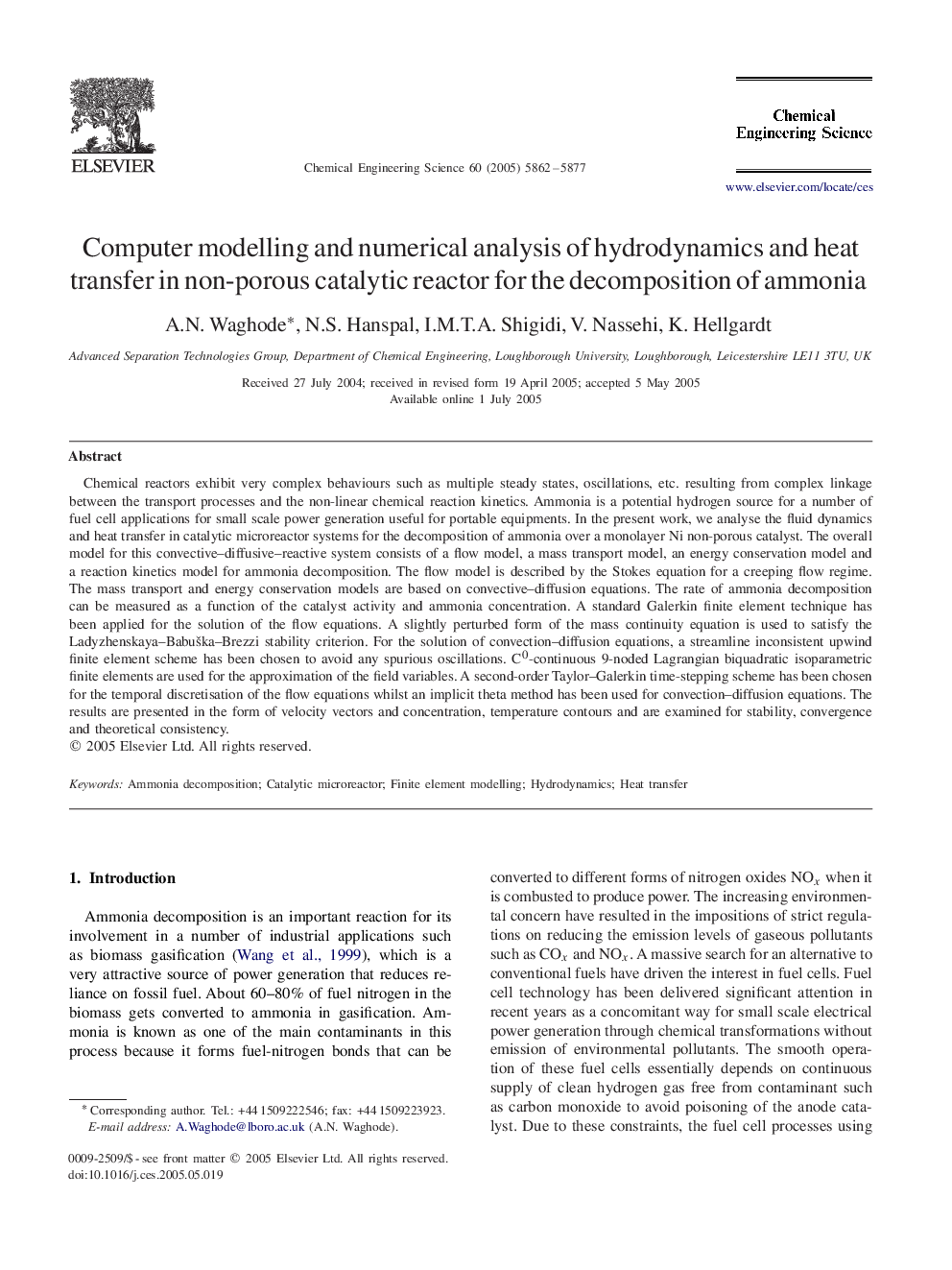| کد مقاله | کد نشریه | سال انتشار | مقاله انگلیسی | نسخه تمام متن |
|---|---|---|---|---|
| 159435 | 457037 | 2005 | 16 صفحه PDF | دانلود رایگان |

Chemical reactors exhibit very complex behaviours such as multiple steady states, oscillations, etc. resulting from complex linkage between the transport processes and the non-linear chemical reaction kinetics. Ammonia is a potential hydrogen source for a number of fuel cell applications for small scale power generation useful for portable equipments. In the present work, we analyse the fluid dynamics and heat transfer in catalytic microreactor systems for the decomposition of ammonia over a monolayer Ni non-porous catalyst. The overall model for this convective–diffusive–reactive system consists of a flow model, a mass transport model, an energy conservation model and a reaction kinetics model for ammonia decomposition. The flow model is described by the Stokes equation for a creeping flow regime. The mass transport and energy conservation models are based on convective–diffusion equations. The rate of ammonia decomposition can be measured as a function of the catalyst activity and ammonia concentration. A standard Galerkin finite element technique has been applied for the solution of the flow equations. A slightly perturbed form of the mass continuity equation is used to satisfy the Ladyzhenskaya–Babuška–Brezzi stability criterion. For the solution of convection–diffusion equations, a streamline inconsistent upwind finite element scheme has been chosen to avoid any spurious oscillations. C0C0-continuous 9-noded Lagrangian biquadratic isoparametric finite elements are used for the approximation of the field variables. A second-order Taylor–Galerkin time-stepping scheme has been chosen for the temporal discretisation of the flow equations whilst an implicit theta method has been used for convection–diffusion equations. The results are presented in the form of velocity vectors and concentration, temperature contours and are examined for stability, convergence and theoretical consistency.
Journal: Chemical Engineering Science - Volume 60, Issue 21, November 2005, Pages 5862–5877